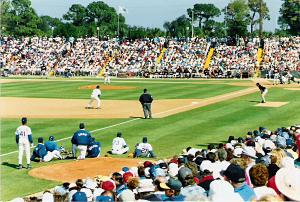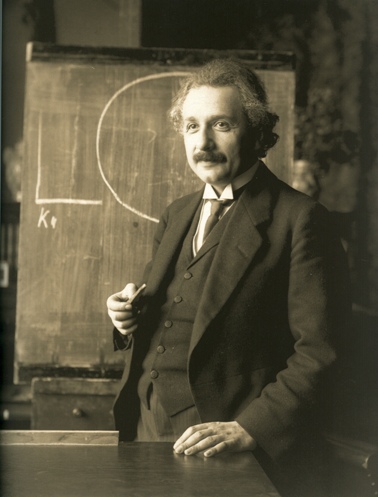
Every Spring, the Pros Get Back to the Fundamentals, Do You?





ATI June Space & Satellite Courses
Space Professional,
Did you know that ATI has been a leader in space and satellite training since 1984? ATI technical training helps you increase your value to your employer and gain the knowledge you need to get the edge over the competition. But don’t take our word for it, check out the links below to sample some of the pages direct from the instructor’s notes, before you attend a course.
Don’t see the space & satellite training topic your looking for below? Tell Us About It. We want to develop and schedule the courses you need, when and where you need them.
In This Issue: June Space & Satellite Courses
Solid Rocket Motor Design & Applications Jun 2-4 (Cocoa Beach, FL)
Antenna Fundamentals—One Day Overview June 8 (Laurel, MD)
Satellite Communications – An Essential Introduction June 8-10 (Beltsville, MD)
GPS Technology – Solutions for Earth & Space June 8-11 (Columbia, MD)
Spacecraft Quality Assurance, Integration & Testing June 10-11 (Los Angeles, CA)
Satellite Communication Systems Engineering Jun 15-17 (Beltsville, MD) Thermal & Fluid Systems Modeling June 16-18 (Beltsville, MD) Space Systems Fundamentals June 22-25 (Beltsville, MD)Schedule of All ATI Courses Through July 2010
Solid Rocket Motor Design & Applications Jun 2-4 (Cocoa Beach, FL) Register
This three-day course provides a detailed look at the design of solid rocket motors (SRMs), a general understanding of solid propellant motor and component technologies, design drivers, critical manufacturing process parameters, sensitivity of system performance requirements on SRM design, reliability, and cost; and transportation and handling, and integration into launch vehicles and missiles.
Antenna Fundamentals—One Day Overview June 8 (Laurel, MD) Register This one day class is geared as an introduction into basic antenna and antenna array concepts. The material is basic and should be familiar to an engineer working on any system involving transmitted electromagnetic waves (e.g., radar, satellite communication, terrestrial communications, etc.). Satellite Communications – An Essential Introduction June 8-10 (Beltsville, MD) Register This introductory course has recently been expanded to three days by popular demand. It has been taught to thousands of industry professionals for more than two decades, to rave reviews. The course is intended primarily for non-technical people who must understand the entire field of commercial satellite communications, and who must understand and communicate with engineers and other technical personnel. Check out the PDF Course Sampler! GPS Technology – Solutions for Earth & Space June 8-11 (Columbia, MD) Register Nearly every military vehicle and every satellite that flies into space uses the GPS to fix its position. In this popular 4-day short course, GPS expert Tom Logsdon will describe in detail how those precise radionavigation systems work and review the many practical benefits they provide to military and civilian users in space and around the globe. Each student will receive a new personal GPS Navigator with a multi-channel capability. Check out the PDF Course Sampler! Spacecraft Quality Assurance, Integration & Testing June 10-11 (Los Angeles, CA) Register Quality assurance, reliability, and testing are critical elements in low-cost space missions. The selection of lower cost parts and the most effective use of redundancy require careful tradeoff analysis when designing new space missions. Satellite Communication Systems Engineering Jun 15-17 (Beltsville, MD) Register This three-day course is designed for satellite communications engineers, spacecraft engineers, and managers who want to obtain an understanding of the “big picture” of satellite communications. Check out the PDF Course Sampler! Thermal & Fluid Systems Modeling June 16-18 (Beltsville, MD) Register This three-day course is for engineers, scientists, and others interested in developing custom thermal and fluid system models. Principles and practices are established for creating integrated models using Excel and its built-in programming environment, Visual Basic for Applications (VBA). Real-world techniques and tips not found in any other course, book, or other resource are revealed. Step-bystep implementation, instructor-led interactive examples, and integrated participant exercises solidify the concepts introduced. Application examples are demonstrated from the instructor’s experience in unmanned underwater vehicles, LEO spacecraft, cryogenic propulsion systems, aerospace & military power systems, avionics thermal management, and other projects. Check out the PDF Course Sampler! Space Systems Fundamentals June 22-25 (Beltsville, MD) This four-day course provides an overview of the fundamentals of concepts and technologies of modern spacecraft systems design. Satellite system and mission design is an essentially interdisciplinary sport that combines engineering, science, and external phenomena. We will concentrate on scientific and engineering foundations of spacecraft systems and interactions among various subsystems. Check out the PDF Course Sampler! Those who plan ahead, get ahead. ATI Course Schedule Through July 2010 is Available Now! Join ATIcourses.com E-Newsletter List:Want course updates only for the technical topics that are of interest to you? Sign-up to receive ATIcourses customized E-newsletters.
As a subscriber, you will receive links to our newest catalogs, monthly course announcements for your choice of technical topics, and access to technical white papers. You will always be provided the option to unsubscribe at any time by clicking the unsubscribe link at the bottom of each e-newsletter.
Within 5 minute after you submit to join our list, remember to check your inbox and click on the link to “confirm your subscription” so you can receive your first ATIcourses e-newsletter. The confirmation is to protect you from receiving unwanted email.Once you click on the “confirm your subscription” link, you will instantly gain access to sample course notes from over 50+ courses. The samples are 20-50 pages of notes direct from our courses so you can judge the value of the material before attending–also a useful technical source for future reference.
Quick Links Don’t see the acoustic/sonar training topic your looking for below? Tell Us About It. We want to develop and schedule the courses you need, when and where you need them. Download Latest Catalog or Request a Paper Copy Help us to be sure this e-mail newsletter isn’t filtered as spam. Adding our return address TrainingByATI@aol.com to your address book may ‘whitelist’ us with your filter — and ensure that future course announcements get through. Message Sent By: Carolyn Cordrey, ATI Course Coordinator Applied Technology Institute 349 Berkshire Drive, Riva, MD 21140 Phone: 410-956-8805 / 888-501-2100 Fax: 410-956-5785 www.ATIcourses.com